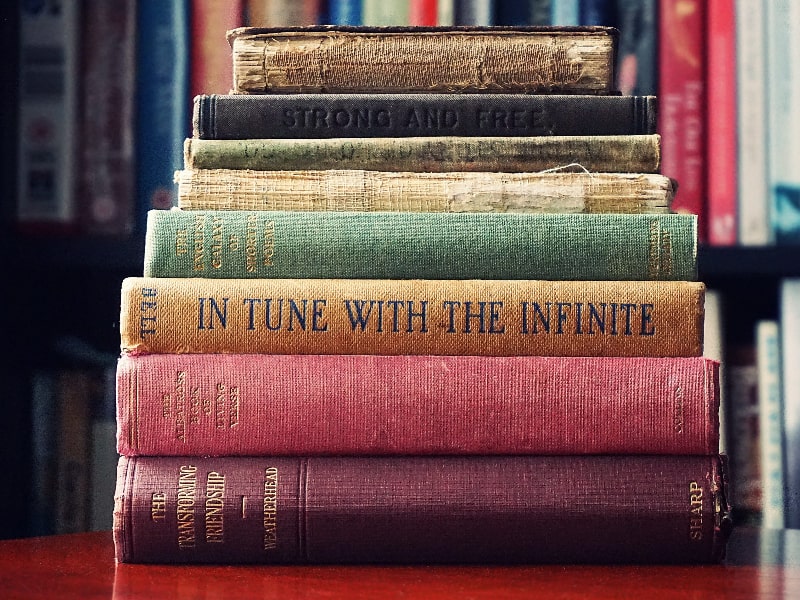Indian literature: what it is, origin, literary development, characteristics, authors and more
Contents
What is Indian literature?
We call Indian literature to the literary manifestation that takes place in the territory of the Republic of India. It is considered one of the most important literatures in the world, being also one of the oldest and with the greatest literary production, since it has been possible to know texts written in the 22 recognized languages of the country. However, of the oldest manifestations, the Sanskrit language was one of the most widely used, which is why it is also known as Hindu literature, referring mainly to the first context in which it was born, the religious context.
One of the main features of Indian literature consists of the themes they initially address, since their texts focus on the religious context, thus creating a large selection of literary expressions that included worship, wisdom and religion. In addition to Hindu literature, which will be the first stage and origin of literature in India, Buddhist literature and Muslim literature also appear, although to a lesser extent, which you will be able to consult in types of literature.
History and origin of literature in India
The earliest records of Indian literature are the Vedas, a set of writings that appear approximately between 1600 and 700 BC. These writings would be preserved because they constituted, in first measure, the basis of Hinduism in its primary stage. The content of these writings, the Vedas, consisted of myths, precepts, rituals and chants that were spread through oral transmission. Subsequently, they began to be written down and passed on to the priests, who were in charge of performing the rituals.

After the Vedas, a series of texts appeared that contradicted some of the precepts that were published in the Vedas, at which time two of the most important works of Indian literature were also composed: The Mahabharata and The Ramayana. The works contain a series of advice, narratives, myths and other religious precepts that are now considered sacred texts for Hindu followers.
With the arrival of what was called the Brahmanical period, Indian literature undergoes a strong change and transition from the Veda and the Hindu religion, given that at this time the social context also undergoes a series of modifications where society begins to be divided into castes, so that it becomes necessary to create works containing the most important rules of conduct, punishments and the functioning of karma in order to maintain the followers.
At present, Hindu literature has important changes in relation to what was its ancient manifestation, so that there are marked divisions with religion, as well as demonstrates the need to separate from the British from pacifist precepts that are presented by Mahatma Gandhi. In this way, he exposes a return to Hinduism, but also to Buddhism, without ignoring the influence he has received from the West in terms of the incorporation and exploration of new literary styles, where he will have, at the same time, an important participation.
Development of Indian literature
Indian literature was mainly grouped into three types of manifestations or classifications. These are:
The Samhitas: they are composed from four collections of books. The first one is the Rig-Veda or “Veda of stanzas and hymns”, text destined to the priests to ask the divinity for the presence in the sacrifices. There is the Atharva-Veda, or “Veda of incantations”. It is composed of about 730 hymns that vary in content, so that it is possible to find there domestic rites, incantations to preserve love, incantations against diseases and ailments, among others.
There is also the Sama-Veda or “Veda of hymns”, which is a manual used for worship in which all the hymns that are intended to be sung during sacrificial ceremonies are gathered. And finally we find the Yogur-Veda or “Veda of the sacred formulas”, which compiles a series of prayers that are written in verse and prose addressed especially to religious cults.
The Brahmanas: in this category are the texts and principles addressed to the universe, but also to the soul and the divinity. It is distinguished from other classifications because it is based on the pantheistic concept of a divine universe named Brahma, which has the universal soul, capable of passing from body to body to meet him.
In this category are “The Universal Flood” and “The Nymph Urvashi and King Purunas”.
The Sutras: this classification contains a series of aphorisms or short formulas that include information on grammar, rites, incantations, among others. This type of text is intended for the dissemination of the most important principles of Brahmanism in view of the advances that are beginning to be evidenced in Buddhism.
Stages of Indian literature
According to the production of Hindu texts that begin to be created, Hindu literature develops from four stages. These are:
Adikal Literature
In this first stage, the main expression of literature in this area takes place, based mainly on poetic expression. Thus, through poetry, different stories were told, both heroic and related to religion, especially of its most important figures.
Bhakti Kal Literature
The second stage takes place between the XIV and XVII centuries. This moment is characterized by the importance for the writers to be able to emphasize the consciousness of God over the followers. However, in addition to these expressions, many records were also found with epic poems of the same period.
Ritikal Literature
This stage takes place between 1600 and 1850 A.D. It will be characterized mainly by focusing the writings on love themes, which are focused on highlighting the power of this feeling. Likewise, in addition to this type of writings, poetic records dating from the same period will be found.
Adhunikaal Literature
What was considered the last stage of Hindu literature, takes place around the 19th century and develops until the present day. This stage will be characterized by the exploration that writers begin to make in different styles, as well as literary genres that begin to take shape in the world of literature with the passage of time. In this way, the writers of this area begin to make their participation with works that include comedy, novels, short stories, drama, and fiction and non-fiction texts.

Main characteristics of Indian literature
Among the most important characteristics of this literature are the following:
Content: although many writers of posterity bet on literary creation from other approaches, genres and styles, the truth is that Hindu literature will be recognized mainly for its religious content, where it exalts the virtue of the gods and the benefits they have in favor of human beings to receive a favor from them. In this way, they include the punishments they will receive for incorrect conducts, highlighting once again the religious content.
Moral intention: one of the most important characteristics of the religious content will be the moral intention with which they end their writings. That is to say, the stories that are transmitted or written in Hindu literature often have the intention of leaving in the reader a moral teaching or value for the reader.
The origin: often many of the texts of Hindu literature will show the constant concern of people to try to explain the origins of the world, a fact that can be observed in different writings that include descriptions and other types of texts that relate this topic.
Characters: the most representative figures in the stories of Hindu literature are often gods or divine incarnations, most of whom possess great beauty, bravery and conduct worthy of imitation. These protagonists also go through fantastic events involving other supernatural beings.
Balance: another of the most important aspects of the manifestations of Hindu literature is related to the precept of balance of the universe expressed in their writings. This idea is based on the fact that balance will depend on the respect that human beings have for all living beings with which they coexist on Earth, so that any action or conduct, whether negative or positive, will have repercussions on the being in the next life.
Among the most important works of Indian literature we find The Mahabharata, considered one of the most extensive works of universal literature, with more than 200,000 verses. Its plot revolves around a series of fights between the brothers Kuru and Pandu, having novelistic elements. In addition, it includes poems of philosophical character, texts about the miseries of the human being and content for the preparation for the moment of death. Another of the most important texts in Indian literature is the Ramayana, an epic of 2,400 verses narrating the exploits of Rama, a king who suffers exile in the company of his wife.
There are also other texts such as the Puranas, which is an encyclopedia of the Hindu religion and contains a compilation of traditional myths and legends. As for the most important authors are distinguished: Valmiki, Chanakia, Kalidasa, Rabindranath Tagore, Dhanpat Rai Srivastava, RK Narayan, among other writers.
